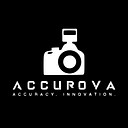Reflectors in Photography: Shaping Light for Picture-Perfect Results

Lighting plays a crucial role in photography, and mastering its manipulation is key to capturing stunning images. Reflectors are simple yet powerful tools that photographers use to control and enhance lighting, particularly in portrait and product photography. This article explores the use of reflectors in photography, discussing their types, benefits, and techniques for achieving optimal results.
Understanding Reflectors in Photography Reflectors are surfaces that bounce light onto a subject, used to fill in shadows, soften harsh lighting, and enhance the overall quality of an image. They come in various sizes, shapes, and colors, each offering different effects and levels of control over the light.
Types of Reflectors and Their Uses
- Silver Reflectors: These provide a strong, clear light, ideal for brightening shadows and adding contrast. They are particularly useful on cloudy days or in low-light conditions.
- White Reflectors: Offering a softer, more natural light, white reflectors are perfect for portrait photography as they gently fill in shadows without altering the color temperature.
- Gold Reflectors: Gold reflectors add warmth and a golden hue, making them ideal for sunset portraits or achieving a sun-kissed look.
- Black Absorbers: Although not reflectors in the traditional sense, black absorbers (or flags) are used to subtract light, deepen shadows, and reduce reflections.
- Translucent Diffusers: These soften and diffuse direct light, reducing harshness and shadows, much like a softbox.
Benefits of Using Reflectors in Photography
- Enhance Natural Light: Reflectors are invaluable for outdoor shoots, where controlling natural light can be challenging.
- Cost-Effective Lighting Solution: Reflectors are a budget-friendly alternative to expensive lighting setups.
- Portable and Versatile: Lightweight and often foldable, reflectors are easy to carry and can be used in various shooting environments.
- Improves Image Quality: By controlling shadows and highlights, reflectors help achieve balanced exposure and enhance the subject’s features.
Techniques for Effective Use of Reflectors
- Positioning: The placement of the reflector is crucial. Experiment with different angles to find the best position for illuminating your subject.
- Distance to Subject: The closer the reflector, the stronger its effect. Adjust the distance based on the desired intensity of the light.
- Collaboration with Models: When working with models, communication is key. Guide them on positioning to make the most of the reflected light.
- Use in Studio and Outdoor Settings: Reflectors are useful in both studio and natural lighting conditions, offering flexibility to your lighting setup.
Reflectors are indispensable tools in a photographer’s kit, providing an easy and effective way to manipulate light for beautiful, professional-looking photographs. Whether you’re shooting portraits, products, or landscapes, using reflectors can significantly improve your lighting and elevate the quality of your images.
In this article, we’ve explored the various aspects of using reflectors in photography. Reflectors are simple yet essential tools that can dramatically improve lighting conditions, bringing balance and clarity to your photographs. By understanding and utilizing different types of reflectors, photographers can enhance their ability to shape light and create visually stunning images.
#PhotographyReflectors #LightingInPhotography #PortraitLighting #OutdoorPhotography #PhotographyTips #PhotoReflectors #StudioPhotography #NaturalLightPhotography #CreativeLighting #Accurova #AccurovaAI #PhotographyTechniques #ReflectorsInAction #PhotographyGear #LightShaping
